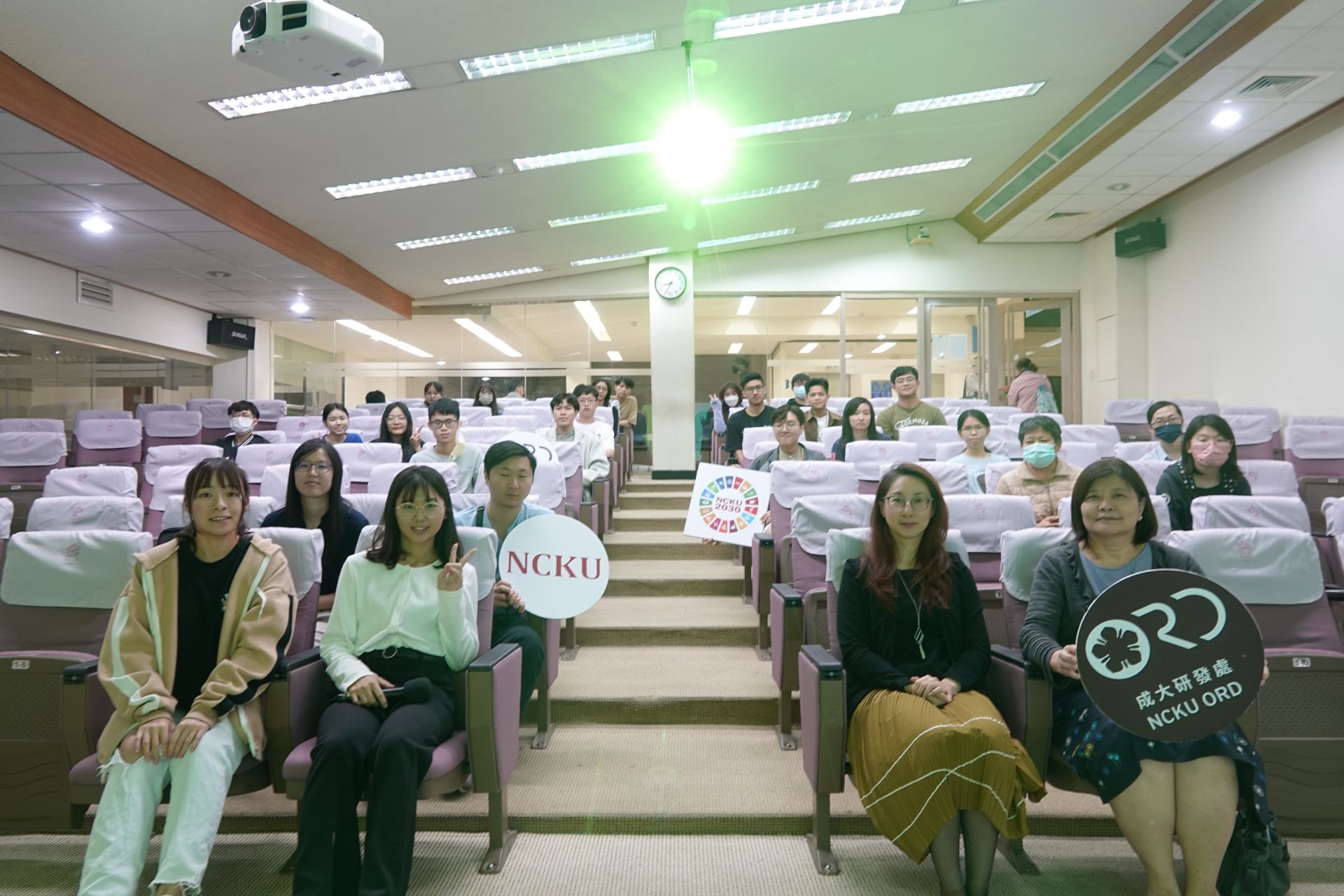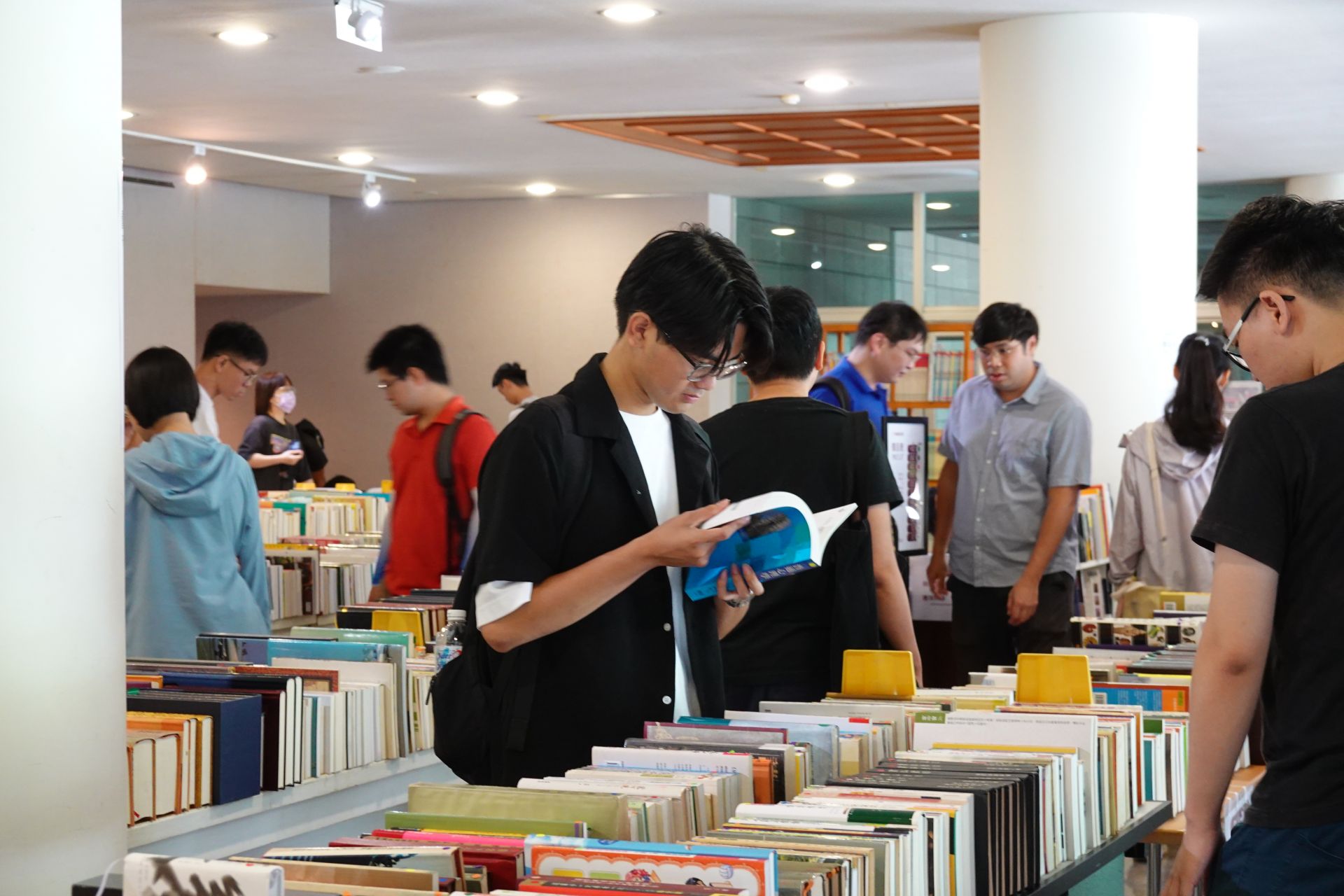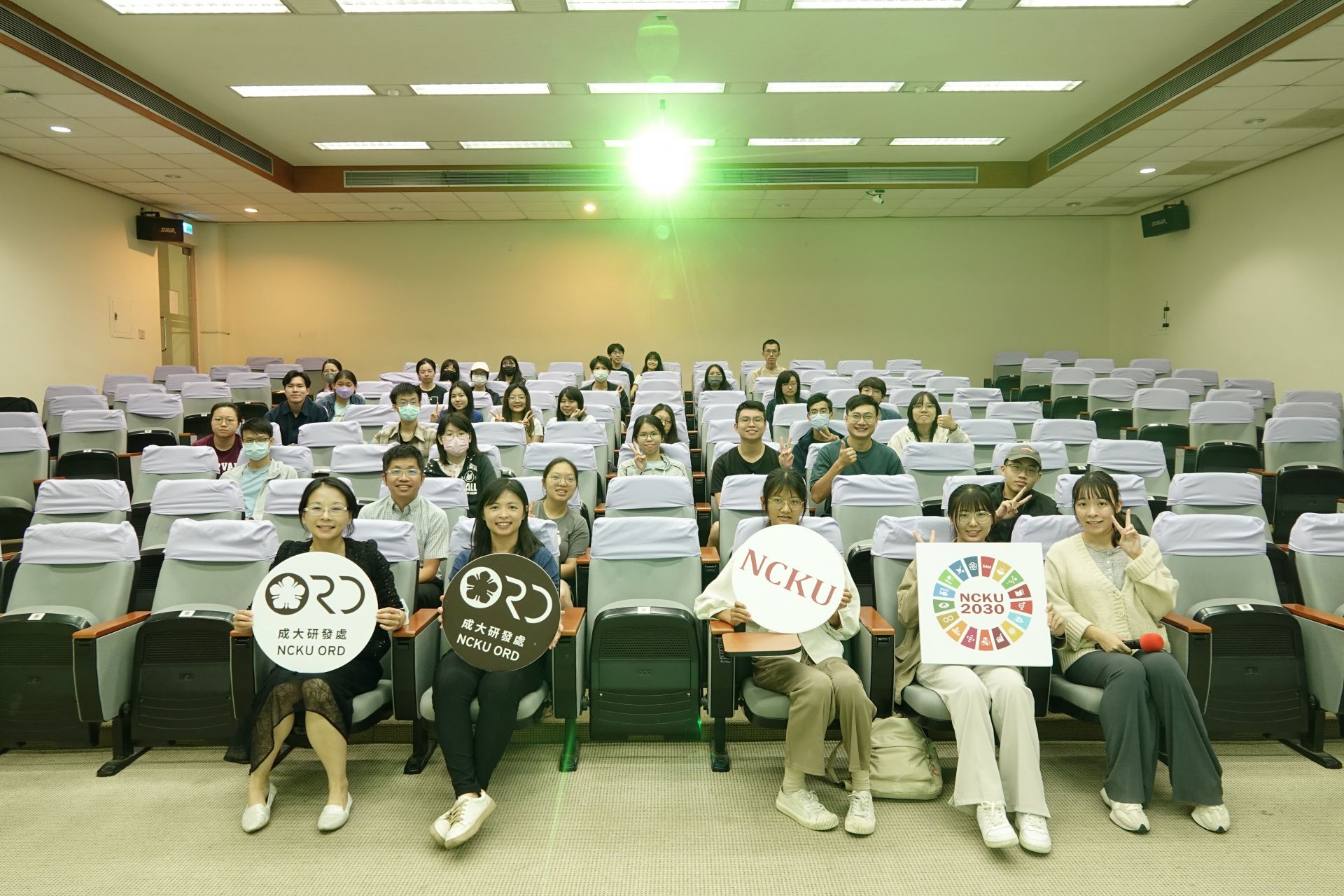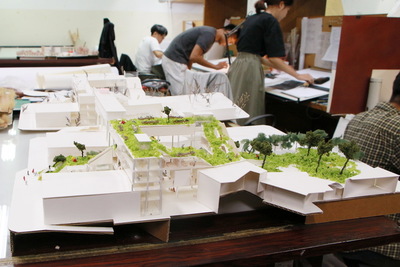SDG12
Environmental Protection on Campus: Department of Architecture, NCKU Becomes the First to Ban Styrofoam for Model Construction
To promote waste reduction, the Department of Architecture, National Cheng Kung University (NCKU) has banned students from using Styrofoam to construct models since the first semester of the 2019 academic year. This was a concrete response to environmental issues and an implementation of environmentally friendly policies in the classroom. The chair of the Department of Architecture, professor Kwang-Tyng Wu, stated that this was the first such initiative by an architecture department in Taiwan. The recycling of Styrofoam consumes considerable manpower and material resources; thus, reliance on Styrofoam should be curbed to avoid excessive waste of resources.
Styrofoam, which is made by adding a blowing agent to polystyrene and heating it, is a relatively light and cheap material that is thin, widely available, and easy to manipulate, and it is often used as a modeling material by architecture students. In the first week of the 2019 academic year, the Department of Architecture, NCKU announced to the students of all grades through design class professors that the use of Styrofoam has been banned. Professors and students agreed to the new policy, and the department’s studio is currently providing environmentally friendly alternative materials such as corrugated paper and wooden boards for model construction. Wu stated that, “Our space has become clearer now that there are no more Styrofoam dust. The abolishment of Styrofoam has been unexpectedly successful.”
Wu believed that the student participation is highly related to the successful banning of Styrofoam. In 2019, students of the Department of Architecture discovered that the department often had considerable leftover model materials waiting to be processed; thus, they established a Flea Market club for students of all grades that served as an exchange platform for leftover materials. According to Wu, the Flea Market has effectively increased the utilization rate of materials, reduced resource waste, and helped students save material expenses. This was a concrete action that followed the public welfare and environmental protection goals of recycling.
The founder of the Flea Market, Chung-Hsien Hung, expressed disappointment with the considerable amount of leftover model materials in the department during 2018. Because she wanted to practice lessons about the recycling economy, she modified the rebar that was originally used as part of the department building’s structure and was currently exhibited in the department’s exhibition space into storage shelves. Many of the existing materials were left by previous students, and the entire space exemplified a concept of recycling.
The Flea Market stores a variety of tools and materials for model making. For example, there are various colors and volumes of spray paint, various textures and sizes of paper, different lengths of wood scraps, cork boards, and drawing rulers. The Flea Market also introduced a unique way of purchasing. Chia-Hsuan Wu, a senior in the Department of Architecture and the current administrator of the Flea Market said that “when you are shopping in the Flea Market, you first buy shopping baskets of various sizes ranging from NT$10 to NT$80. You are then free to take anything as long as it can fit in the basket.”
The bargain price has encouraged many students to search for items at the Flea Market. Ya-Yu Hsiao, a sophomore in the Department of Architecture and another administrator of the Flea Market, said that for students, the Flea Market can reduce the cost of model materials and can fulfil the objectives of environmental protection and waste reduction; Hsiao noted that “it is really great to have a space like this in the department.”
Styrofoam, which is made by adding a blowing agent to polystyrene and heating it, is a relatively light and cheap material that is thin, widely available, and easy to manipulate, and it is often used as a modeling material by architecture students. In the first week of the 2019 academic year, the Department of Architecture, NCKU announced to the students of all grades through design class professors that the use of Styrofoam has been banned. Professors and students agreed to the new policy, and the department’s studio is currently providing environmentally friendly alternative materials such as corrugated paper and wooden boards for model construction. Wu stated that, “Our space has become clearer now that there are no more Styrofoam dust. The abolishment of Styrofoam has been unexpectedly successful.”
Wu believed that the student participation is highly related to the successful banning of Styrofoam. In 2019, students of the Department of Architecture discovered that the department often had considerable leftover model materials waiting to be processed; thus, they established a Flea Market club for students of all grades that served as an exchange platform for leftover materials. According to Wu, the Flea Market has effectively increased the utilization rate of materials, reduced resource waste, and helped students save material expenses. This was a concrete action that followed the public welfare and environmental protection goals of recycling.
The founder of the Flea Market, Chung-Hsien Hung, expressed disappointment with the considerable amount of leftover model materials in the department during 2018. Because she wanted to practice lessons about the recycling economy, she modified the rebar that was originally used as part of the department building’s structure and was currently exhibited in the department’s exhibition space into storage shelves. Many of the existing materials were left by previous students, and the entire space exemplified a concept of recycling.
The Flea Market stores a variety of tools and materials for model making. For example, there are various colors and volumes of spray paint, various textures and sizes of paper, different lengths of wood scraps, cork boards, and drawing rulers. The Flea Market also introduced a unique way of purchasing. Chia-Hsuan Wu, a senior in the Department of Architecture and the current administrator of the Flea Market said that “when you are shopping in the Flea Market, you first buy shopping baskets of various sizes ranging from NT$10 to NT$80. You are then free to take anything as long as it can fit in the basket.”
The bargain price has encouraged many students to search for items at the Flea Market. Ya-Yu Hsiao, a sophomore in the Department of Architecture and another administrator of the Flea Market, said that for students, the Flea Market can reduce the cost of model materials and can fulfil the objectives of environmental protection and waste reduction; Hsiao noted that “it is really great to have a space like this in the department.”

SDG12The series finale, "Decoding Carbon Credits," explored carbon trading and corporate responsibility.
View more
SDG12Use Life to Inspire Life: NCKU Library’s Used Book Charity Sale Marks 22 Consecutive Years
View more




















